Loading
Archives of Orthopaedics
ISSN: 2692-8299
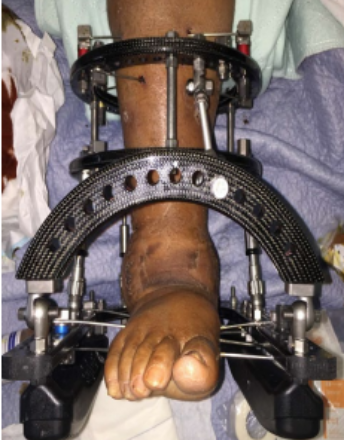
2020
Volume 1, Issue 1, p1-16
Articles published in this issue are Open Access and licensed under Creative Commons Attribution License (CC BY NC) where the readers can reuse, download, distribute the article in whole or part by mentioning proper credits to the authors.
Ultrasound-Guided Bone Surgery: A New Perspective
Alvaro Martínez-Ayora, Manuel Cuervas-Mons, Javier Vaquero
Metatarsalgia is a frequent cause of forefoot pain. Surgical treatment is based on the performance of osteotomies at the level of the minor radii to restore a normal distribution of pressure within the forefoot and improve the biomechanics during gait.
Arch Orthop, 2020, Volume 1, Issue 1, p1-4 | DOI: 10.33696/Orthopaedics.1.001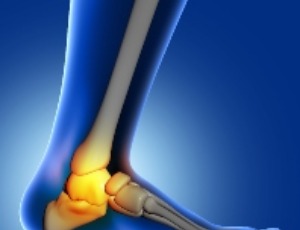
Rearfoot and Ankle Reconstruction for Charcot Joint Disease: A Review
Gabriel Santamarina
Charcot joint disease refers to the structural breakdown of the joints in the presence of neuropathy [1]. It has multiple pseudonyms but one of the most descriptive names of this condition is “Diabetic Neuroarthropathy.” The first cases studied by Jean-Marie Charcot however were not due to diabetic peripheral neuropathy but syphilis-related peripheral neuropathy.
Arch Orthop, 2020, Volume 1, Issue 1, p5-10 | DOI: 10.33696/Orthopaedics.1.002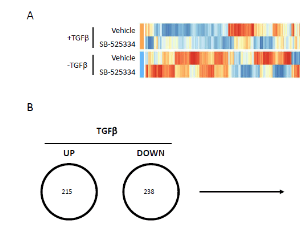
Viscosupplementation in Horses: What do We Really Know?
Anderson Fernando de Souza, André Luis do Valle De Zoppa
The importance of osteoarthritis (OA) is undeniable in equine medicine, with a high occurrence in the routine, several studies have been carried out to understand the pathophysiology of the disease and to seek more efficient methods of prevention and treatment.
Arch Orthop, 2020, Volume 1, Issue 1, p11-13 | DOI: 10.33696/Orthopaedics.1.003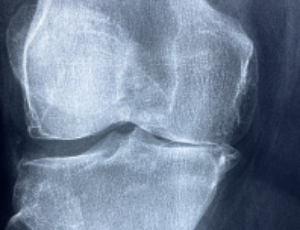
Editorial Commentary for In Throwers with Posterior Instability, Rotator Cuff Tears are Common but Do Not Affect Surgical Outcomes
Andrew J. Sheean, James P. Bradley
Superior labral pathology is an exceedingly common entity among throwers, and in recent years, a number of reports have elucidated the prevalence of posterior glenohumeral instability among overhead athletes (baseball, softball, volleyball.) However, within this unique patient population, these conditions should not be viewed as separate clinical entities, but, rather as findings that exist on a single pathomechanic spectrum.
Arch Orthop, 2020, Volume 1, Issue 1, p14-16 | DOI: 10.33696/Orthopaedics.1.004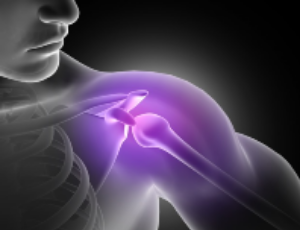
EMG Signal Processing for Hand Motion Pattern Recognition Using Machine Learning Algorithms
Yang Zhou, Chaoyang Chen, Juan Ni, Guoxin Ni, Min Li, Guanghua Xu, John Cavanaugh, Mark Cheng, Stephen Lemos
Stroke is a major cause of death and disability in the world. There were approximately 25.7 million stroke survivors and 6.5 million deaths from stroke [1]. Stroke can result in arm disability and reduce daily life activity via weak arm muscle activity [2]. Studies have been performed to discover therapeutic and assistive approaches to compensate for disabilities and restore functions.
Arch Orthop, 2020, Volume 1, Issue 1 | DOI: 10.33696/Orthopaedics.1.005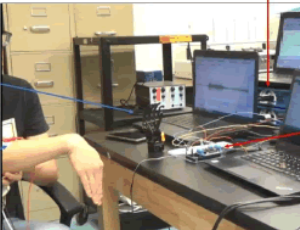
Recommended Articles
Machine Learning for Healthcare: Emerging Challenges and Opportunities in Disease Diagnosis
Diagnosis is a process that identifies, explains, or establishes the individual’s disease from its symptoms and signs. Early and precise diagnosis is crucial since it influences the efficacy of treatment and avoids longterm complications for the infected person. Further, in the case of infectious diseases, undiagnosed patients can transmit the disease to a healthy population unknowingly. Besides, most of the diseases evolve with the time that significantly affects the clinical outcomes.
Avulsion of the Common Extensor Tendon and Radial Collateral Ligament Tear
A 59-year-old left hand dominant female was evaluated by a physical therapist. The patient had an 8-year history of chronic intermittent left elbow pain with a recent exacerbation occurring after moving furniture. Aggravating factors included holding a coffee cup, picking up trash bags, and lifting heavy dishes. Symptoms were eased by ice and Meloxicam as prescribed by her primary care provider.
Artificial Intelligence and Machine Learning in Cancer Care: Current Applications and Future Perspectives
Cancer is the second most common cause of death worldwide, accounting for an estimated 9.6 million deaths in the year 2018, a number that is expected to grow to more than 13 million by 2030. In the past decade, we have witnessed unprecedented scientific advancement in the understanding of cancer etiology, prevention, diagnosis and development of new therapeutic strategies.
A Neuromuscular Integration Approach to the Rehabilitation of Forward Head and Rounded Shoulder Posture: Systematic Review of Literature
Forward head posture (FHP) and rounded shoulder posture (RSP) are common postural misalignments caused by muscular imbalance that lead to a variety of pain patterns in the neck and shoulder [1,2]. FHP prevalence ranges from 61% to 85% and is associated with RSP [3-7]. RSP prevalence ranges from 66% to 78% [3,5,7]. Importantly,
The Diabetic Shoulder – A Literature Review
The shoulder complex is composed of three bony structures: the clavicle, scapula, and humerus, which are connected to form three synovial (glenohumeral, acromioclavicular, and sternoclavicular) and two functional (scapulothoracic and subacromial) joints.
Ultrasound-Guided Bone Surgery: A New Perspective
Metatarsalgia is a frequent cause of forefoot pain. Surgical treatment is based on the performance of osteotomies at the level of the minor radii to restore a normal distribution of pressure within the forefoot and improve the biomechanics during gait.
Rearfoot and Ankle Reconstruction for Charcot Joint Disease: A Review
Charcot joint disease refers to the structural breakdown of the joints in the presence of neuropathy [1]. It has multiple pseudonyms but one of the most descriptive names of this condition is “Diabetic Neuroarthropathy.” The first cases studied by Jean-Marie Charcot however were not due to diabetic peripheral neuropathy but syphilis-related peripheral neuropathy.
Viscosupplementation in Horses: What do We Really Know?
The importance of osteoarthritis (OA) is undeniable in equine medicine, with a high occurrence in the routine, several studies have been carried out to understand the pathophysiology of the disease and to seek more efficient methods of prevention and treatment.
EMG Signal Processing for Hand Motion Pattern Recognition Using Machine Learning Algorithms
Stroke is a major cause of death and disability in the world. There were approximately 25.7 million stroke survivors and 6.5 million deaths from stroke [1]. Stroke can result in arm disability and reduce daily life activity via weak arm muscle activity [2]. Studies have been performed to discover therapeutic and assistive approaches to compensate for disabilities and restore functions.
The use of Percutaneous Achilles’ Tendon Lengthening as an Adjunct Procedure in Foot and Ankle Surgery: A Review
The goal of reconstructive foot and surgery for diabetic foot pathologies is to create a plantigrade foot that is braceable and has low risk of ulcer formation or recurrence. Experienced surgeons are cognizant that foot pathologies are defined in three planes: frontal, transverse and sagittal. The Achilles’ tendon is the chief deforming force in the foot along the sagittal plane.
A Pilot Study for Assessing a Novel Method of Measuring Shoulder Activation in Healthy Volunteers Using Surface Electromyography
Over the years, healthcare providers have used a host of physical examinations and clinical tools to assess a patient’s physical functioning and health, but many of these assessment tools lack generalizability among physicians or the specificity and sensitivity to accurately diagnose a patient. Range of motion measures are one-way physicians assess many physical deficiencies in the upper and lower extremity.
Comparing Contrast Agent Enhancement: The Value of Artificial Intelligence/Machine Learning
Gadolinium-based contrast agents (GBCAs) work by shortening the T1, T2, and T2* relaxation time constants of adjacent water protons in tissues.
In the Mind of the US Olympic Athletes; Longevity Advantage and Its Relation to Nervous System Disorders and Mental Illness
In a recent study of 8124 US Olympic athletes, Antero et al. [1] found that the US Olympic athletes live 5 years longer than their general counterparts.
Prevalence of Cardiovascular Risk Factors in Osteoarthritis Patients Derived from Primary Care Records: A Systematic Review of Observational Studies
Health intelligence on the frequency of cardiovascular disease (CVD) and its risk factors identifies targets and populations for preventative strategies and allows evaluation of health outcomes, behaviors and interventions in populations and health care settings.
Comparison of Different Post-Processing Algorithms for Dynamic Susceptibility Contrast Perfusion Imaging of Multiple Sclerosis Lesions: A Time to Peak Analysis
The purpose of the present study was to evaluate, in multiple sclerosis (MS) lesions, the diagnostic performance of two different commercial post-processing MR perfusion software. These two different algorithms for processing Dynamic susceptibility contrast (DSC) perfusion images have been used to differentiate perfusion values among white matter (WM) lesions, normal appearing white matter (NAWM), and grey matter (GM) in MS.
A Customized Artificial Pancreas System with Neural Network based Model Predictive Control for Type 1 Diabetic Rats
Advances in sensor and computing technology have enabled researchers to develop artificial pancreas systems (APS) that can mimic the glucose regulation function of a healthy pancreas to treat type 1 diabetes mellitus (T1DM). APS use a continuous glucose monitor (CGM) sensor to read the latest blood glucose level (BGL).
A Machine Learning Study of 534,023 Medicare Beneficiaries with COVID-19: Implications for Personalized Risk Prediction for People Over 65
The global outbreak of COVID-19 has resulted in over 378 million infections and worldwide deaths have surpassed 5.6 million. In the United States, there have been over 75 million confirmed cases and over 886,000 deaths as of February 1, 2022.
Sialyllactose Prevents Cartilage Damages via M0 Macrophage Maintenance in Yucatan Mini-Pig Osteoarthritis Model
Sialyllactose, known to be abundant in human breast milk, has anti-inflammatory properties, but its preventive effect on osteoarthritis remain unclear. Here, we demonstrated the efficacy of 3’ sialyllactose (3’ SL) and 6’ sialyllactose (6’ SL) in preventing osteoarthritis in Yucatan mini-pigs. Twelve female Yucatan mini-pigs were administered 0, 200, 400 mg 3’ SL or a combination of 200 mg 3’ SL + 200 mg 6’ SL for 12 weeks (4weeks before and 8 weeks after surgery); then, osteoarthritis was induced in the left knee by anterior cruciate ligament transection surgery. Kinematic variables were used to quantify gait analysis on the treadmill, and the degree of osteoarthritis was analyzed in the femur and tibia cartilage
Radiographic Features of Lateralized Reverse Shoulder Arthroplasty in Osteoarthritis
RSA is a worldwide treatment to manage pain and improve shoulder function in patients with advanced gleno-humeral osteoarthritis. The main efforts of researchers were directed to address glenoid replacement, using devices that would preserve glenoid bone stock and ensure prosthesis stability.
Allelic Variants on SLC6A3 Neurotransmitter Gene and Their Relationship with Personality Traits Scales in Egyptian Athletes
Human dopamine transporter gene (SLC6A3) is one of the neurotransmission genes that plays an important role in controlling the behavior and psychological reactions toward various physical activities. The aim of the present study is to evaluate the associations between SLC6A3 3’-UTR VNTR (3’VNTR) genotypes and eight personality traits in Egyptian athletes. One hundred athletes (50 males and 50 females) and one hundred non-athletes participated in this investigation either in individual or team games.
About Scientific Archives
Scientific Archives is a global publisher initiated with the mission of ensuring equal opportunity for accessing science to research community all over the world. Spreading research findings with great relevance to all channels without any barrier is our goal. We want to overcome the challenges of Open Access with ensured quality and transparency.
